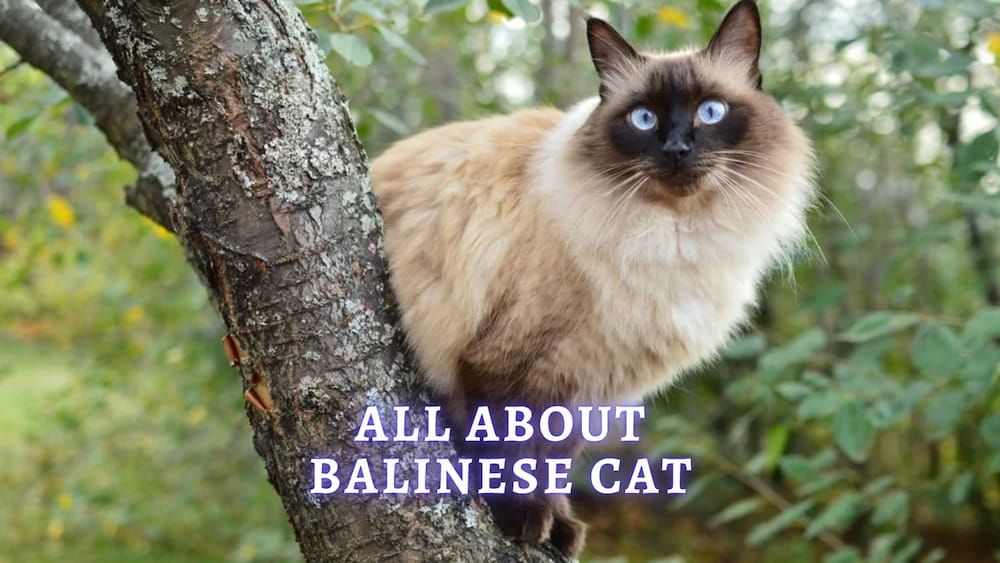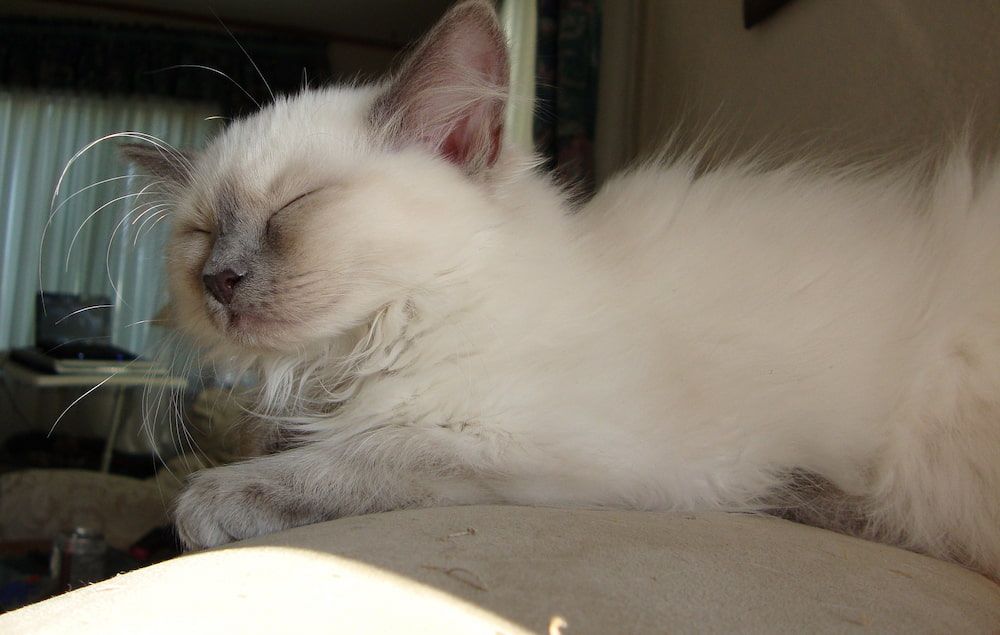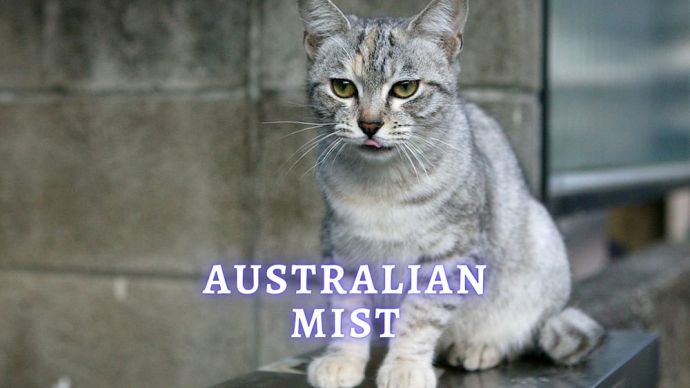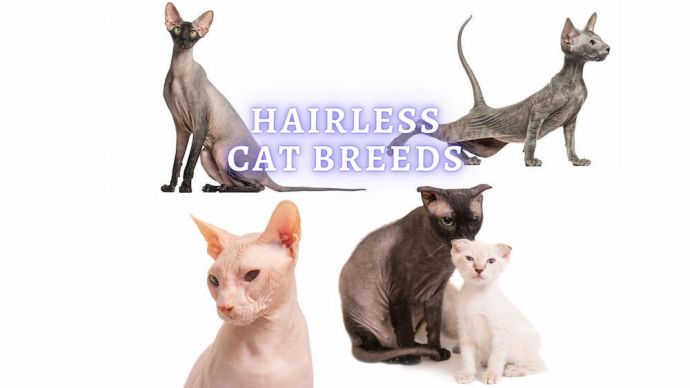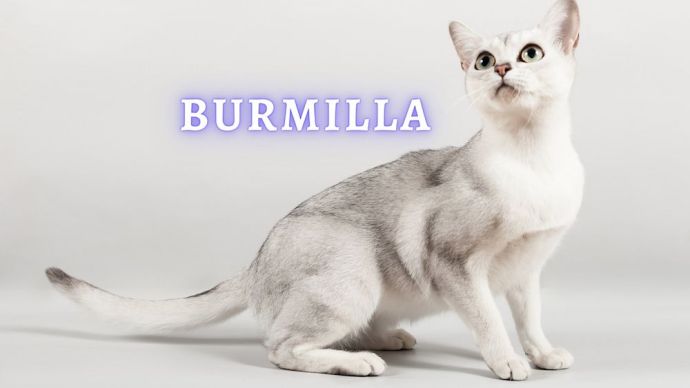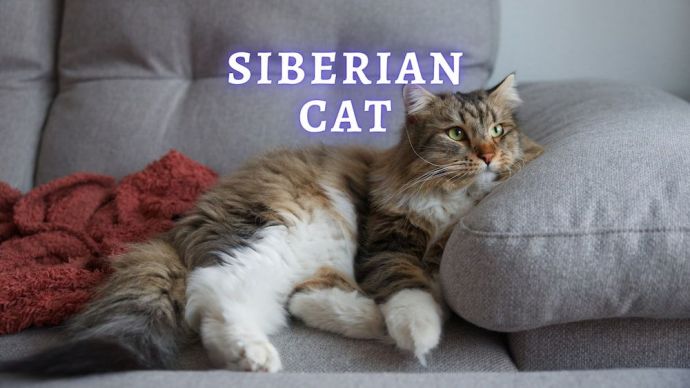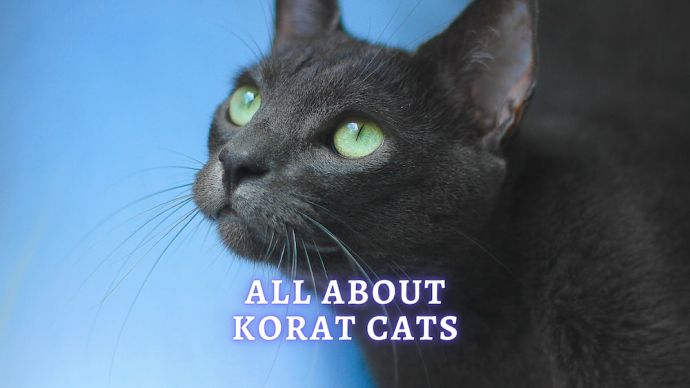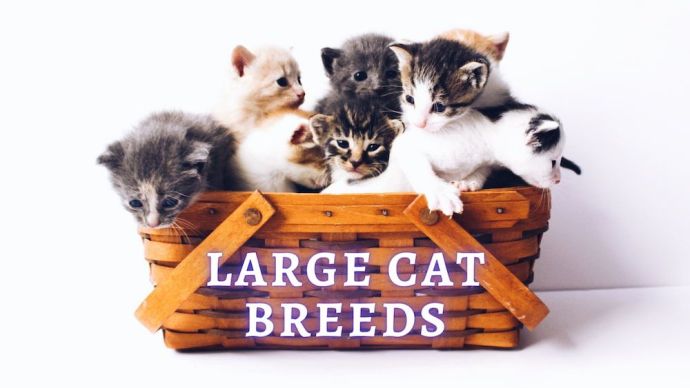Balinese Cat: Temperament, Lifespan and Coat Care
Written by:
Author: Scott Jeffrey
Scott is a professional blogger with 12+ years of experience in writing, and holds an MA in anthropology. He has two cats as housemates. Also, Scott is passionate to research on pet-related topics such as dog training, puppy feeding, and cat health.
View all 63 articlesLearn about our editorial process and veterinary review board.
Viewed: 53
Updated on: 04/14/2023
Are you considering adding a feline friend to your home? If so, consider adopting a Balinese cat. This breed, also known as the Longhaired Siamese, has charmed pet lovers worldwide with its elegant appearance and loving character. Balinese cats are a descendant breed of Siamese and carry many desirable qualities that make the Siamese famous.
What sets the Balinese apart from other pets is their beautiful, flowing coat. The Balinese coat is known for being one of the longest and silkiest in the feline world, and they come in various colors, such as seal point, blue point, chocolate point, and lilac point. While their coat may require slightly more maintenance than other breeds, their stunning appearance is worth it.
Aside from their dashing looks, this pets are also known for being playful and affectionate. They love to spend time with their owners and are great with children and other pets, making them the perfect companion for families. However, it is recommended that they be kept indoors due to their inquisitive nature, as they tend to get themselves into trouble if left to roam freely.
If you are looking for a healthy breed, the Balinese cat is an excellent choice. They are generally free of significant health concerns, but like many other breeds, they may be susceptible to certain genetic imperfections. The Balinese cat can live a long and healthy life with regular exercise, an appropriate diet, and proper healthcare.
Are Balinese cats rare?
The breed is very affectionate and known for being great family pets. They are much less rare because of their increased popularity as a breed. They are a modern breed of cat, loving and demanding. The species is less popular than it once was in the 1950s and early 60s, but you can find breeders of this pets quite easily in most areas worldwide.
Characteristics
| Weight | 6-11 Lbs |
| Size | 1 foot and a half |
| Coat | Cream and darker point colors on the eyes and ears |
| Eyes | Deep Blue |
| Life exp | 12-20 |
| Coat length | Long |
| Grooming | Light |
| Shedding | Medium |
Breed History
The Balinese cat breed may be relatively new, but it has an exciting and unique history. Contrary to their name, this pets do not have any links to Bali or Indonesia. The breed’s Siamese relatives are initially from Thailand. So, how did the Balinese get its name?
The name was created by breeders who thought that the cat’s grace and elegance mirrored that of the dancers in the temples of Bali. This name stuck and has been used ever since, despite having no historical or cultural significance.
The breed itself was a natural mutation first introduced in the 1940s in America after longhaired Siamese kittens appeared in a litter. This spontaneous mutation caused excitement among breeders, who strove to nurture more of this variety. The first Balinese breeding program was introduced in the 1950s, and gradually the Balinese became a recognized breed.
Some people may view the Balinese as simply a longhaired variety of the Siamese cat, which caused disagreement among purists within breeding circles. The Balinese eventually gained official recognition as a separate breed, and the Cat Fanciers’ Federation gave them official championship status in 1961.
Today, the Balinese cat is a beloved breed among pet lovers and is known for their playful personality traits and stunning appearance. Despite not having a long history, the Balinese have quickly become a prominent and well-loved breed within the cat breeding community and the general public.
READ MORE: Lynx-Point Siamese
Interesting Facts
If you’re considering adding a Balinese cat to your family, you should know some interesting facts about this breed. First, you may wonder why they are called this pets. Breeder Helen Smith chose the name to differentiate this breed from their Siamese ancestors. When she saw these cats, Smith was reminded of a Balinese dancer; thanks to their graceful bodies and long, silky coats, the name was a natural choice.
Despite their beauty and charm, the Balinese is classified as a rare breed intelligent cat. They rank 35th in popularity out of the 41 species the Cat Fanciers’ Association recognized. However, this doesn’t mean they are less desirable as a pet.
One interesting fact about the Balinese breed is that they have a relatively short history, having only been recognized as an official breed in the 1960s. To ensure the consistency of their bloodlines, only registered, purebred Siamese cats were allowed in the Balinese breeding program. This has helped maintain the breed’s distinct characteristics, such as their mesmerizing pale blue, eyes and long, smooth coat.
Another unique fact about the Balinese breed is that they are known for their athleticism and agility. While they may appear graceful and delicate, these cats have a solid and muscular build that allows them to be quick and agile. They have been known to excel in activities like agility courses, which proves that they are more than just pretty faces.
Personality
The breed has its unique personality and is seen as a very affectionate cat. Their energy levels, vocal nature, and loving disposition make them wonderful companions with great character.
| Affection | Very |
| Good with kids | Very |
| Easy to train | Very |
| Energy | High energy |
| Shedding | Medium Shedders |
| Vocal | Very |
| Need for exercise | It needs stimulation and excursive |
| Good with other pets | Very good with other pets |
| Diet | Can be a picky eater |
| Grooming needs | Require little intervention |
| Easy to leave alone | Better with visits, toys, and companionship, not an independent cat |
Activity
If you are considering bringing a Balinese cat into your home, remember that they are a breed that requires regular stimulation and activity to keep them happy and healthy. Due to their curious and playful nature, they tend to thrive in households with plenty of mental and physical stimulation opportunities.
One way to stimulate your Balinese cat is to provide plenty of toys and interactive games. Balinese cats are known for their playful character and love playing with toys that challenge their minds and entertain them. They also tend to enjoy games that involve jumping, climbing, and chasing, so cat trees and scratching posts can be great investments for these active and playful pets.
Another way to keep your Balinese cat engaged is to interact with them regularly. Balinese cats are highly social and love spending time with their owners. They enjoy being petted, groomed, and played with, so taking a few minutes each day to bond with your pet can keep them mentally and emotionally satisfied.
It’s also essential to provide your Balinese pet with regular exercise opportunities. These cats have a lot of energy and must burn it off with physical activity. Consider playing games like fetch or taking your cat for walks on a harness and leash. These activities will keep your cat active and provide a bonding opportunity for you both.
Lifespan
A Balinese can live anywhere between 12-20 years if they keep in good health, and you can provide them with good quality food and nutrition. Cats kept indoors and regularly exercised will often enjoy the most extended lifespan. It is essential to consider that the breed has a series of health concerns that should be monitored with regular veterinary appointments.
Health
While this pets are generally a healthy breed, like all cats, they are prone to specific health issues. One of the most common health issues is progressive retinal atrophy (PRA), which affects the eyes. This is a degeneration of the retina in the eye that can cause near- or far-sightedness or even blindness. Additionally, some Balinese cats may be cross-eyed, leading to visual impairments.
Another health issue Balinese pets can develop is dilated cardiomyopathy, which enlarges the heart muscles and decreases heart function. This can be a severe condition if not treated, and regular veterinary check-ups are recommended to monitor your pet’s heart health. Additionally, some research has suggested that Balinese pets may be at low risk for hypertrophic cardiomyopathy (HCM).
Balinese cats can also be at increased risk for liver amyloidosis, a condition where there is an abnormal protein buildup that eventually leads to liver failure. This can be a severe issue that requires prompt veterinary attention. Not all Balinese pets will develop these health issues, but they must be aware of them and watch for potential symptoms.
Finally, adult Balinese may be more susceptible to respiratory problems, specifically asthma. Stress, allergies, or other environmental factors can trigger this condition. If you notice any respiratory distress or abnormal breathing in your Balinese cat, visit your veterinarian immediately.
Care
While Balinese pets are a longhaired breed and do shed, there is evidence suggesting that they produce lower amounts of the Fel d1 and Fel d4 protein allergens. This doesn’t make them hypoallergenic, but it does indicate that they may be a better option for people with allergies than other longhaired breeds. However, it’s essential to spend time with the breed first to see how your allergies react.
Regarding grooming, Balinese pets require regular brushing to keep their coats sleek and free of tangles. Fortunately, they don’t have an undercoat, so grooming is relatively simple. Their ears will also require regular cleaning to prevent infections and excessive wax buildup, and their nails must be trimmed regularly.
However, grooming is just one small part of caring for a Balinese pet. Your most significant responsibility as a Balinese pet parent is to give them enough attention and affection. These cats are not the type to quietly go about their business – they want to be involved in everything you do. They crave attention, both in the form of playtime and an affectionate personality. If they receive enough attention, it’s common for them to exhibit undesirable behavior or vocalization. So, be prepared to shower your Balinese pet with lots of love and attention.
READ MORE: Mixed Siamese Cat Breeds
Grooming and coat
Balinese require little coat care and grooming requirements. With regular weekly grooming, they can keep their coat healthy. If you notice your pet stops grooming, consider supplementing with regular baths.
Rescue
You can find rescue programs online for Balinese pets as well as find kittens online through pet finder and other services. Contacting a breeder of Balinese cats is usually the easiest way to find rescue programs in your area.
Costs of Balinese cats
The cost of Balinese can range depending on the area you are in and the lineage of the cats you are getting. You can expect to pay more if you have a Balinese pet from an esteemed line of show cats. Usually, the costs of Balinese kittens range from $800-1500.
Conclusion
Overall, Balinese cats can make wonderful and affectionate companions. With their gorgeous coats and playful personalities, these pets will bring you lots of joy. However, as with all cats, they require regular brushing and grooming to maintain their healthy, soft coat. It’s also important to watch for potential health issues and visit the vet regularly. Finally, this breed is incredibly demanding regarding attention – they love being involved in everything you do and need plenty of playtime and affection. Your Balinese will indeed thrive with patience, dedication, and lots of love from you!
People also ask:
Are Balinese cats hypoallergenic?
Balinese cats produce lower amounts of the Fel d1 and Fel d4 protein allergens than other longhaired cat breeds. While this doesn’t necessarily make them hypoallergenic, it could be a better option for people with allergies than other breeds. However, it’s best to spend time with the breed before deciding – everyone’s allergies vary, so what works for one person may not work for another.
What is the difference between Siamese and Balinese cats?
Siamese and Balinese cats have many similarities, with both breeds having pointed coats, big ears, blue eyes, and a sleek body type. The primary difference between these cat breeds is that the Balinese cat have a long silky coat, while the Siamese cat has a short fine coat. There are some longhair Siamese varieties, but generally, a long-haired Siamese cat is going to be a Balinese cat most times. Siamese breeders do produce these long-haired cats that resemble adult Balinese cats but they are not recognized by the cat fanciers association. Additionally, the Siamese tends to be more vocal than the Balinese. Lastly, while both breeds are active and playful, the Siamese is usually more energetic and loves exploring its surroundings.
How much does a Balinese cat cost?
A Balinese cat at a rescue program may cost just $100-200, but a purebred Balinese kitten from a breeder can cost an average of $800-1500.
 Cat Care Why Does My Cat Attack My Legs? 10 Reasons Why and What To Do About It (Vet-Approved Advice)
Cat Care Why Does My Cat Attack My Legs? 10 Reasons Why and What To Do About It (Vet-Approved Advice) - 45566
- 21
 Cat Veterinary Tips Cat Stomach Gurgling: Vet Advice on Why is Your Cat Stomach Gurgling?
Cat Veterinary Tips Cat Stomach Gurgling: Vet Advice on Why is Your Cat Stomach Gurgling? - 35339
- 4
 Cat Veterinary Tips My Cat Lost its Voice: Can Cats get Laryngitis? (Vet Advice)
Cat Veterinary Tips My Cat Lost its Voice: Can Cats get Laryngitis? (Vet Advice) - 23247
- 13









